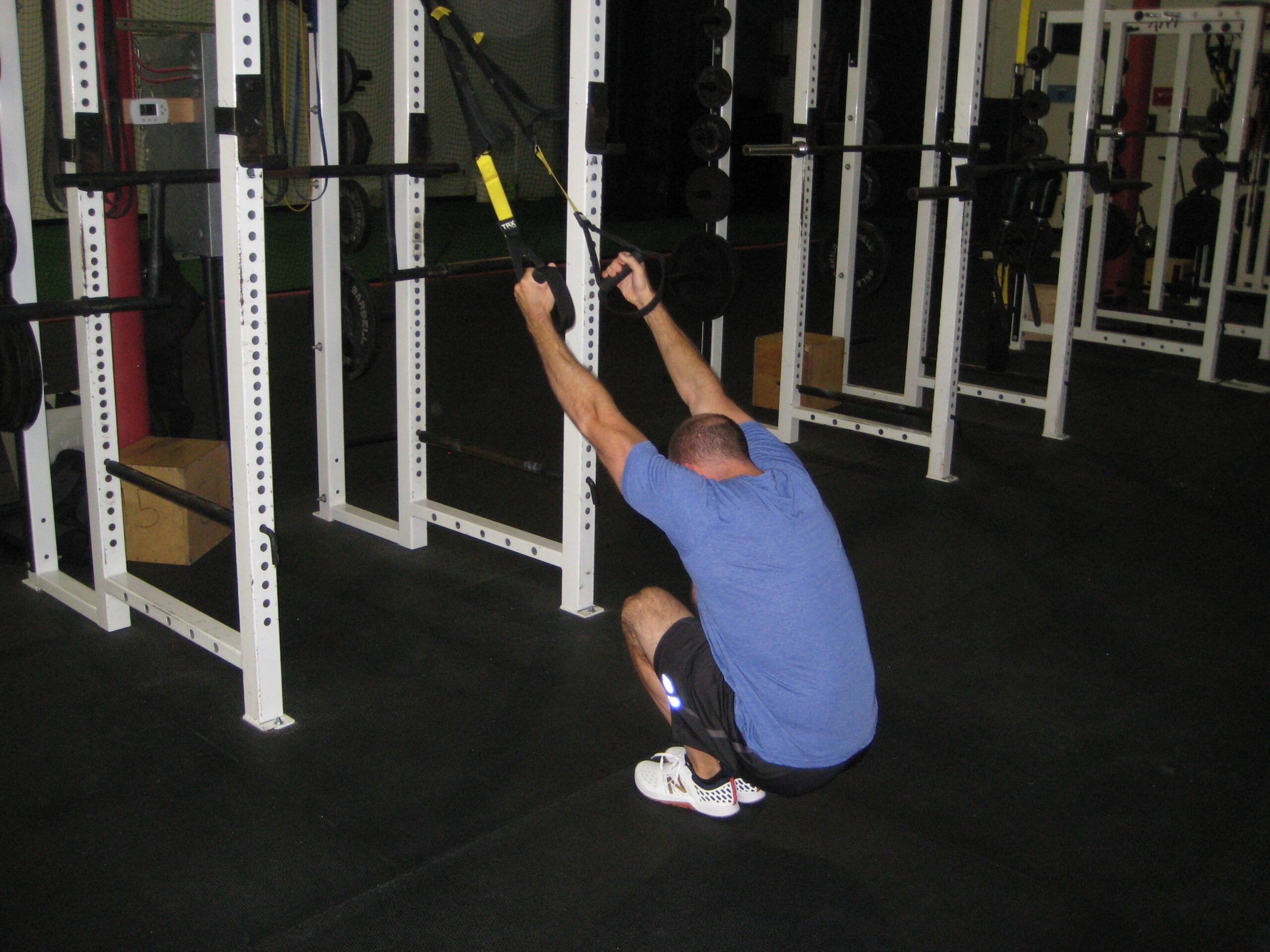
Performance Programming Principles: Installment 2
As I promised back in November, I’ve decided to dedicate a regular series to the principles that govern a lot of our program design at Cressey Sports Performance. Here’s the second installment:
1. A few positional breathing drills can be a game changer, but don’t let them take over the training session.
Positional breathing drills have really surged in popularity in recent years, largely thanks to the great work of the folks at the Postural Restoration Institute. Forceful exhalation in certain positions can both activate certain muscles and inhibit others. Take, for instance, TRX Deep Squat Breathing with Lat Stretch.
We’re firing up several muscles of exhalation: rectus abdominus, external obliques, serratus anterior – and toning down our lats, rhomboids, lumbar extensors, and calves (to name a few). It’s not uncommon for folks to get up from this exercise after 30 seconds and feel dramatically different.
That said, as is often the case in the fitness industry, if a little is good, then a lot must be better, right? It didn’t take long for us to find the zealots who are spending 30 minutes doing positional breathing at the start of every training session. It’s somewhat analogous to the folks who foam roll for an hour every day.
You’re better off doing 1-2 breathing drills at the start of a warm-up (and possibly as a cool-down) and then following it up with good resistance training technique to make those transient changes “stick.” Patience and persistence always win out over short-term “overindulgence.”
2. Follow these two great Selective Functional Movement Assessment (SFMA) strategies.
SFMA was one of the better courses I’ve taken in the past few years, and two programming principles they discuss really stand out:
a. Chase dysfunctional, non-painful patterns first.
Let’s say someone walks in with a cranky shoulder that’s limited into internal rotation: a dysfunctional, painful pattern. If you just throw caution to the wind and stretch that shoulder into internal rotation, more often than not, you’re going to flare things up even further.
Let’s say that individual also has a pronounced scapular anterior tilt and very limited thoracic extension and rotation. If you do some soft tissue work on pec minor and work in some thoracic spine mobilizations, there is a very good chance that when you go back to retest shoulder internal rotation, it’ll be improved and pain-free. Sometimes, the best way to get from A to B is through C or D.
b. Find and address areas were passive range-of-motion far exceeds active ROM.
There’s a reason a lot of gymnasts and dancers retire with stress fractures in their lower backs; they have a lot of passive range-of-motion, but not always much motor control to stabilize those ranges of motion. This is why it’s important to have assessments that test both passive and active ROMs (straight leg raises and supine vs. standing shoulder flexion are great examples). And, you need to have training initiatives that build control in those passive ranges.
3. Check out the Acumobility Ball.
I posted this on my Instagram and thought it might be of interest. The Acumobility Ball has been a game changer for us. You can save 10% on it at www.Acumobility.com with the coupon code cressey.
Here’s a little example of how we’d use it on the pec minor/coracobrachialis/short head of biceps attachments on the coracoid process.
4. There’s nothing that says you have to progress or regress programming – and there are many different ways to make lateral moves.
As few years ago, Charlie Weingroff coined the term “lateralizations” for times when you don’t progress or regress an exercise, but rather, move laterally.
An example would be something along the lines of going from a standing 1-arm cable row to a split-stance 1-arm cable row. There really isn’t any change to exercise complexity, but it does give the trainee some variety in their programming.
I’d say that lateralizations are the most useful with adult clients who don’t have crazy lofty fitness goals – and therefore aren’t interested in taking on a ton of risk in their training programs. They might not crave being sore all the time from all the innovative new exercises you can throw at them. Lateralizations can keep training fun via novelty without adding a steep learning curve.
Additionally, remember that exercise selection isn’t the only way to progress or regress the challenge to the athlete or client in front of you. You can increase or decrease volume, alter the tempo, modify the load, or adjust the rest intervals.


